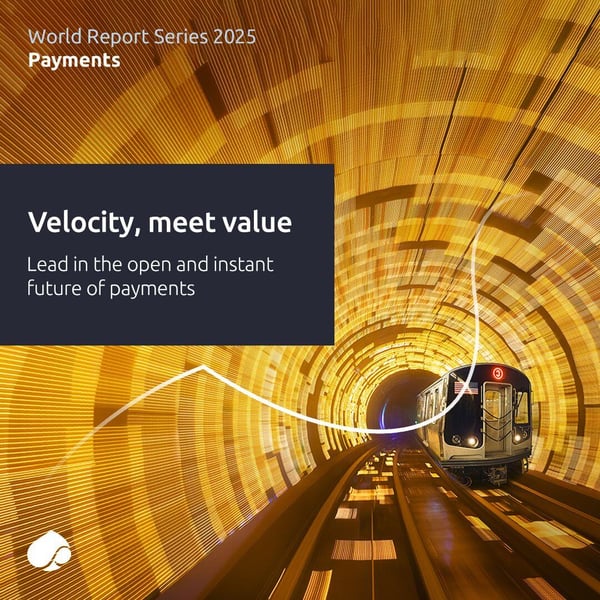BankiFi's Head of Strategic Growth, Nick Reid, joined Shameer Sachdev - host of the FML podcast - to provide insights into a variety of industry trends and how BankiFi navigates these as an ally to banks and financial institutions. Most notably, they discuss the shift from Inside-out to Outside-in Embedded Banking and the implications of this on the fintech industry and banks.
What is BankiFi and what is BankiFi’s role in the fintech ecosystem?
BankiFi is a technical service provider to banks. Our strap line is putting banks at the heart of businesses and what I mean by that is, when the company was founded, we had this vision, or rather, Mark, our Founder and CEO had this vision that SMEs should be able to manage their business finances in one place.
We think the best place for them to do that is from within their trusted financial institution's digital banking channel. Now, there are a couple of challenges with that and we look at the challenges and the problems we're solving through two different lenses: The first lens I've described is very much from a SMEs viewpoint.
SMEs would much rather access this full suite of digital banking services, without having to navigate a jungle of different applications, and they need the financial institution to meet each element in their workflows. So, we chose to go to market and serve banks – and ultimately, this is where our field of expertise as a team lies.
But the other side, and the biggest, probably the biggest side to our story is we look at the digital banking landscape. We're also looking at the advances in technology and banking regulations, most notably in open banking and embedded finance – both of which are allowing for and lowering the barrier to entry for digital challengers that threaten the very existence of financial institutions.
A lot of the digital challenges and third-party platforms now have access to transactional capabilities through APIs and through open banking, through PSD2, et cetera. What that's starting to do is disintermediate the relationship that the, what I call incumbent financial institutions, have always enjoyed; not solely with the relationship they have with their SME customers, but also in terms of the relevance of their digital banking channel. By disintermediating this relationship, their core revenue pools in SME lending, deposits lending and other sources of revenue begin to erode. These are the problems that we are trying to solve.
Put simply, we provide a suite of services which make an SME digital banking channel much more relevant in the eyes of SMEs. You can think of our platform as a mini bank branded accounting software or ERP, but equally we integrate with major third-party accounting software providers to bring data from those platforms into the digital banking channel.
In the future, the cash flow position of SMEs then powers lending propositions for financial institutions as well. So, our proposition is all about servicing banks, providing the workflows and the technical capabilities from digital banking channels, which makes their channels more relevant in the eyes of SMEs and also helps them better serve SMEs as well.
Can you share more about the term ‘Outside-In Banking’ as it is a fairly new term? What does it mean and how will it impact the fintech community and beyond?
The term silo is used a lot in banking, particularly in reference to incumbent financial institutions.
The way we look at this is banks tend to think about products in the SME space rather than workflows. They think about business current accounts, or checking accounts, depending on which part of the world you're in. They think about loans and about cards or cheques. All of these are payment instruments or means of moving money from A to B.
In fact, SMEs just want the workflow and they want the bank or the payment capability almost invisible within that. But to come back to the siloed analogy, for that reason, banks have built their systems and infrastructures to look outwards from the inside.
Starting with the core, then the digital channel and all the banking, payments and card products are all tightly coupled together. Then they very much look outside on the rest of the world, and because it's all tightly coupled together, looking from the inside out, it makes it very difficult for banks to innovate and implement new value-added services on top of that. That is inside-out banking.
Outside-in banking obviously turns that model completely on its head by building the workflows on top of their digital banking strategy, so from the outside in. You can then start to harness a lot of valuable data from other sources, other banks for instance, through open banking connectivity. Valuable data can also be gleaned through the bank’s ability to connect to accounting software, sources of tax data etc. and this elevates the digital banking channel beyond those internal silos and therefore becomes conscious of the outside-in. This achieves the following:
- Making the bank’s digital channel more relevant in the eyes of the SME
- Transactional capabilities are embedded within the SME workflows, making the channel stickier for the SME.
- The bank then becomes a place from which they can run their business.
The real value for the banks is in being able to harness a forward-looking view into how their SME customers operate. As I alluded to before, banks typically have had a very good historical view of payments in and out of a business, but aside from the amounts of these payments, where the money has moved from and obviously the names of beneficiaries/payers, et cetera, it's always been a very historical limited view, and that's because it's been an inside out view.
By turning this on its head and going ‘outside-in’, banks get a forward-looking view thanks to the ability to harness data. This not only protects their core revenue base and their customer base, but equally this starts to offer incremental revenue opportunities as well.
Adopting an outside-in approach to their digital banking strategy can also be a powerful customer acquisition tool for banks. This outside-in model allows them to provide services to SMEs who don't even bank with them. So, positioning these as services provided by a bank, even though they might not hold an account with that bank, can help them to acquire new customers. The benefits of this strategy are endless.
Want to know more?
Find out how our Embedded Banking solutions can strengthen your SME digital banking offering. Arrange to speak or meet with Nick and request a demo by clicking the button below.
.png)


.png?width=600&name=Rectangle%20316%20(3).png)
.png?width=600&name=Webinar%20assets%20(1).png)

